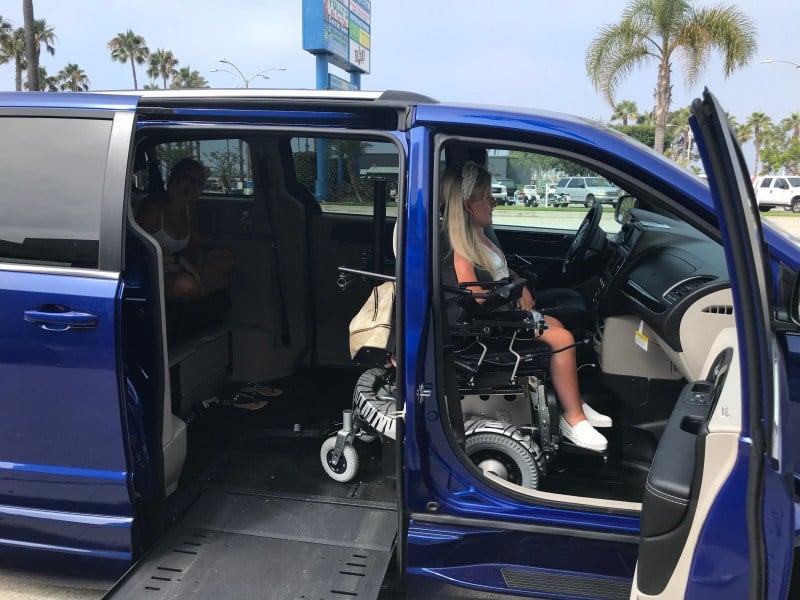As much as I love Stanford, I would also love, from time to time, to venture beyond the perimeter of our paradisiacal campus and experience a taste of ‘real life’ outside the Stanford Bubble. However, as a full-time electric wheelchair user, I have found the accomplishment of this dream close to impossible.
Besides using the Caltrain or making a loop of campus on the X-Line Marguerite, accessible transportation in the Bay Area is extremely limited and, during my time at Stanford so far, has been one of the few barriers I have encountered whilst navigating life in college as a student with disabilities. We often joke that Stanford students rarely have the time or motivation to explore the local area when everything we need lies right here at our fingertips, but for myself and other students using wheelchairs, the reality is that the option to do so simply does not exist.
To provide some logistical background, in order for me to access any mode of transportation I require a specialist vehicle equipped with a ramp and crash-tested restraints to allow me to remain safely in my wheelchair for the duration of the journey. As with most things in the world of disability, this equipment comes at a substantial cost and is therefore limited in its availability in all domains outside of private ownership. Unable to fly my family’s adapted car over from my home in the United Kingdom, I am left with very few options.
Knowing that freshmen are not permitted to have cars on campus, I entered my first year at Stanford giving little thought to how this might affect me and naively anticipated joining my peers in using Uber, Lyft, Zipcar and other local taxi services to take me anywhere the local bus or other public transportation could not. To my dismay, I quickly learnt that this too would be a road to nowhere.
Major companies such as Uber now operate specialist disability services through which wheelchair-accessible vehicles (as described above) can be requested via the app and, diverging from their model of the ‘sharing economy,’ have partnered with a local transportation company to provide the rides at the regular Uber rates. Whilst the app frequently suggests that ‘UberWAV’ (standing for Wheelchair Accessible Vehicle) is available throughout the Bay Area, the reality is that the majority of these vehicles are concentrated at the center of major cities such as San Francisco, so the chances of securing a ride from somewhere like Stanford are almost non-existent. These WAVs are also only available until 10 p.m. since, of course, people with disabilities aren’t supposed to venture out after dark.
Turning in desperation to local taxi companies who will likely charge twice the price of an Uber for the same journey, I was met with equally disappointing options. On more than one occasion I have been left stranded after having booked a wheelchair accessible taxi, only to be then told that there were currently no adapted vehicles available and my booking would therefore be cancelled immediately. In a separate instance, I attempted in advance to secure a ride back from San Francisco following my sorority’s spring formal and was informed by one particular company that they were willing to guarantee me a wheelchair accessible taxi only if I agreed to pay triple the standard fare.
For trips off campus affiliated with classes or Stanford organisations, SuperShuttle has been my saviour, and the additional costs associated with my participation as a wheelchair user have been covered by Stanford’s Diversity and Access Office. However, just recently even SuperShuttle made the decision to cancel the wheelchair accessible vehicle going to and from the airport, leaving me with no option except to travel with my manual wheelchair and be physically lifted into the seat of the car—or risk missing my flight.
Whilst I acknowledge that I am fortunate to have this back-up plan available and many full-time wheelchair users would not be in the same position, spending even just one day in my manual wheelchair strips me entirely of my independence, unable to move or even feed myself without intensive support, and the physicality of being lifted in and out of a vehicle amid a crowd of onlookers is undignified, to say the very least. It also poses a significant risk of injury to both those assisting me and myself.
This lack of wheelchair accessible transportation is most certainly not unique to the Bay Area and, aside from a handful of cities equipped with the resources to make this a priority, this is a problem that persists across the country. I am beyond grateful that public transportation is almost entirely accessible to me and I applaud every effort made to continuously improve this system, but it is no secret that this can only get you so far.
The problem is simple, and I firmly believe that for Stanford students with disabilities, so too is the solution. Following the Zipcar model, if we purchased one wheelchair accessible vehicle, which could be reserved by the hour and charged at the same rate with systems in place to cover gas and insurance, we would enable the growing number of students using wheelchairs on campus to experience the independence and liberation that is so integral to the college experience.
It is my hope that the rest of the transportation industry will continue to develop, expand and fine-tune its services for those with disabilities and, in the meantime, would it not be great to have Stanford uphold its reputation of being one step ahead and lead the way in inclusive innovation to promote access for all?
Contact Tilly Griffiths at tillykg ‘at’ stanford.edu.
